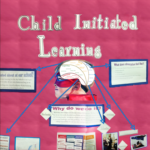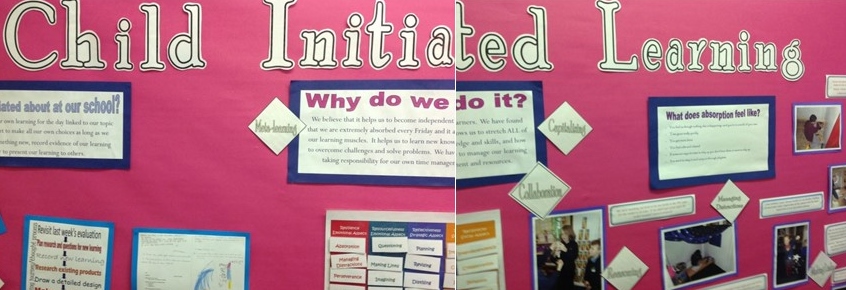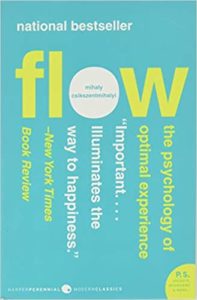How do we turn our classrooms into flow enabling learning cultures?
The classroom culture depicted in our last blog showed a selection of features that begin to shape the emotional climate of your classroom to encourage flow.

This flow classroom culture seems to be underpinned by three big ideas which we explore below.
1. Making flow experiences possible
We might sometimes wonder if there’s any point in developing self-directed learners with the characteristics described by flow. It’s fair to say that relatively few learners leave our schools with strong flow characteristics, and yet we also know that even in the performance pressure of current times students who plan their learning, reflect on their learning and understand themselves as learners (i.e. meta-cognitive and self-regulating learners, if you want the fancy titles) achieve significantly better results. Moreover, in the long-term, if young people are to make the most of themselves in this fast-changing world, their competence as a learner will be vital.
Early childhood experiences are important factors in determining whether a person will or will not easily experience flow. Positive parental influences on children include:
- clarity – about what is expected
- centring – showing an interest in what the child is doing in the present for itself (not, for example, whether this will ensure a university place later in life.)
- choice – where children feel they have a variety of possibilities
- commitment (trusting children) – allowing children to become unconsciously involved in whatever interests them
- challenge – providing increasingly complex opportunities for action.
In other words children who know what they can and can’t do, who don’t have to constantly argue about rules and control, who aren’t worried about parental expectations for future success, who are free to develop interests in activities that will expand them, will find it easier to experience flow and happiness.
In classrooms that translates into promoting learning where pupils are given more opportunities to:
- make choices – of activities, within activities, when activities are completed
- make their own goals
- be involved in planning how they proceed
- review their experience
- offer commentary on their own learning
- evaluate the end product
- be motivated by internal incentives.
2. Offering learners opportunities to lead their own learning
Early years practitioners have long viewed learning as a blend of adult-led learning and child-initiated learning. Sometimes called ‘learning through play’, child-initiated learning enables children to plan and select their own activities, and adults participate rather than lead them. Although this works well for early years, it rarely survives into Key Stage 1 and beyond. The sheer amount of content to be learned and performed firmly pushes learning towards teacher controlled.
A bright spot
Hallbankgate Village Primary School in Cumbria has long organised itself so that all students throughout KS1 and KS2 experience child-initiated learning on a weekly basis. Teachers work with their students from Monday to Thursday. On Fridays, teachers have the day to plan and prepare for the following week, while students engage in child-initiated learning, supported by senior leaders and TAs. On Fridays, students can pursue any area of their own interest (so long as the Head approves!).
 Three Year 5 lads, for example, decided they wanted to try to break the world record for launching a rocket using water power. Equipment was planned for and gathered in advance. They had spent several sessions working this out in advance. Plastic bottles were water filled under pressure; problems in connecting hoses to bottles were discovered and resolved; some bottles were launched skyward; others exploded under the pressure; all children were regularly soaked.
Three Year 5 lads, for example, decided they wanted to try to break the world record for launching a rocket using water power. Equipment was planned for and gathered in advance. They had spent several sessions working this out in advance. Plastic bottles were water filled under pressure; problems in connecting hoses to bottles were discovered and resolved; some bottles were launched skyward; others exploded under the pressure; all children were regularly soaked.
A pointless bit of water play, or 10 year old students being scientists rather than being taught about science? They learned masses.
You may not ready to go as far as this school in enabling your students to take the reins of their own learning but you could try working towards enquiry or project based learning. But that’s a whole tricky topic in itself and we’ll touch on it again in the final flow blog next week
3. Distinguishing Performance from Learning
Performance is not learning, though it may develop from learning. Politicians and policy makers have reduced the goal of schools and colleges to measurable outcomes of knowledge of a limited sort and which offer a very narrow view of the aims of education.
The distinction between learning and performance is crucial if we want to move forward and secure our students as ‘flow’ learners. Evidence suggests that a focus solely on performance can depress performance: learners end up with negative ideas about their competence, they seek help less and use fewer strategies. Furthermore, the evidence shows that if you focus on learning, performance can be enhanced.
Research Matters – read more here
‘How to get better at the things you care about’
Set aside some quality time to watch this 11 minute TED Talk by Eduardo Briceno ‘How to get better at the things you care about’.
Try spending time in your own learning zone, and temporarily abandon your own performance zone.
As you listen, consider particularly how you might “create low stakes islands in otherwise high stakes seas” in your own classroom.
Distilling the key ideas . . .
In the Performance Zone, students seek to demonstrate what they can do; to focus on what they have already mastered; to eliminate or minimise errors; to get it right; to ‘do their best’; to execute flawlessly in the present.
In contrast, the Learning Zone is almost the polar opposite: students seek to explore what they cannot yet do; to focus on what they have yet to master; to learn from the mistakes they make; to do it even better; to ‘do their best’ to improve; to practise and learn how to execute even better in the future.
The focus in the former is on Proving what you can do now. In the latter, it is about Improving what you can do in the future.
Ask yourself:
- What is the balance between Proving and Improving in my own classroom?
- Which zone do my students believe they are predominantly operating in? How might I find out?
- Would it be helpful to explore, together with my students, these 2 zones and the differences between them?
- How can I make visible to learners which zone I expect them to be in?
- How can I make it safer to fail, to ‘create low stakes islands in otherwise high stakes seas’?
- Might my students benefit from watching this? What would I hope that they might learn?

![Big ideas that influence flow across the curriculum [Flow #3] flow 3](https://www.buildinglearningpower.com/wp-content/uploads/2021/04/flow-3-200x200.png)

No comments yet.